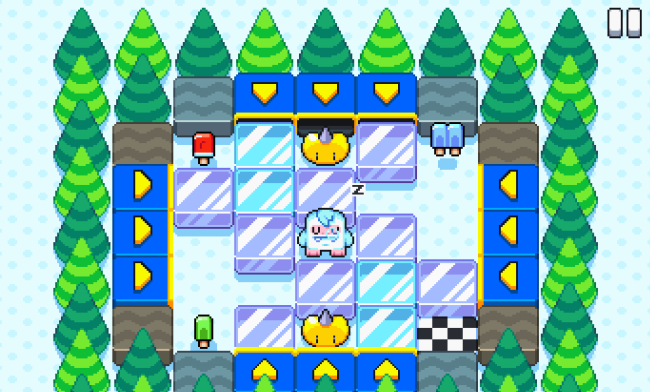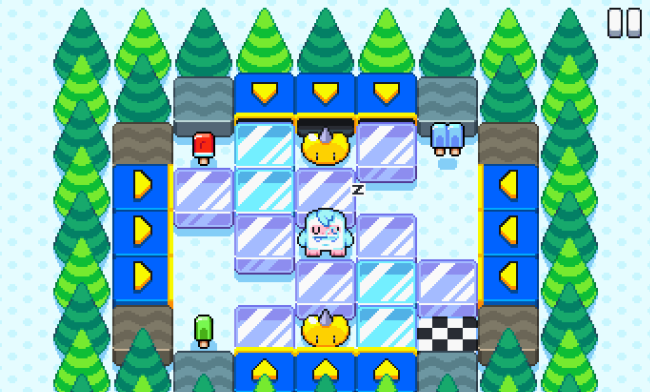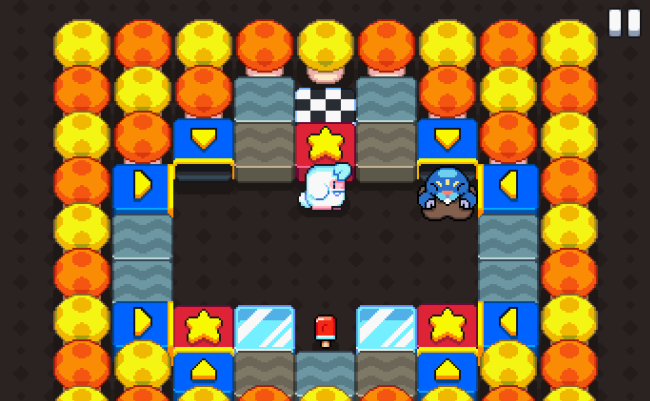- Wondering how to get Monopoly GO! free rolls? Well, you’ve come to the right place. In this guide, we provide you with a bunch of tips and tricks to get some free rolls for the hit new mobile game. We’ll …
Best Roblox Horror Games to Play Right Now – Updated Weekly
By Adele Wilson
Our Best Roblox Horror Games guide features the scariest and most creative experiences to play right now on the platform!The BEST Roblox Games of The Week – Games You Need To Play!
By Sho Roberts
Our feature shares our pick for the Best Roblox Games of the week! With our feature, we guarantee you'll find something new to play!All Grades in Type Soul – Each Race Explained
By Adele Wilson
Our All Grades in Type Soul guide lists every grade in the game for all races, including how to increase your grade quickly!
Lost Yeti Review
Italy’s not exactly considered a hotbed of video game development, but if Lost Yeti is any indication, it should be. This adorable retro puzzler hearkens back to a time before boob physics and ultra-realistic violence, when games were made for and played by everyone. With its pixelated, primary color approach and simple but challenging mechanics, it’s like the charming descendant of games like Dig Dug and Burger Time. If not for its maddeningly repetitive (although admittedly fitting) music score and cruel “coming soon” level tease, it would get high marks all around.
Lost Yeti begins as a troop of yeti (yetis?) is crossing the glacier-scape doing whatever it is yeti do. Among them is a wee, easily distracted, buck-toothed youngster. He spots a tasty popsicle, veers off the path, and—the horror!—finds himself lost. Fortunately, he has you to guide him back to safety. The gameplay here is based on three precepts: 1. Get the yeti (within an enclosed area) from his starting area to a safe zone; 2. Once the yeti starts moving, he doesn’t stop until he runs into an enemy or reaches the safe zone; and 3. Every time the yeti hits a wall, he turns ninety degrees clockwise.
These rules couldn’t be simpler, but it’s amazing how much gameplay developer Neutronized gets out of them. To start, things are fairly simple. You’re given time to get your furry feet wet traversing very basic levels by manipulating ice blocks positioned within them. Even better, you get to tromp around picking up tasty popsicles before skipping along to safety. Soon enough however, you’re faced with nasty things like pointy-headed blobs and fire-breathing mini-dragons who seem to have it in for you, not to mention tricky burrowing creatures and pits full of spikes. If you manage to get your baby yeti from point A to point B, you’re allowed to move on; collected popsicles can be hoarded and used to buy your way past the more challenging levels.

Icy retro fun
Italy’s not exactly considered a hotbed of video game development, but if Lost Yeti is any indication, it should be. This adorable retro puzzler hearkens back to a time before boob physics and ultra-realistic violence, when games were made for and played by everyone. With its pixelated, primary color approach and simple but challenging mechanics, it’s like the charming descendant of games like Dig Dug and Burger Time. If not for its maddeningly repetitive (although admittedly fitting) music score and cruel “coming soon” level tease, it would get high marks all around.
Lost Yeti begins as a troop of yeti (yetis?) is crossing the glacier-scape doing whatever it is yeti do. Among them is a wee, easily distracted, buck-toothed youngster. He spots a tasty popsicle, veers off the path, and—the horror!—finds himself lost. Fortunately, he has you to guide him back to safety. The gameplay here is based on three precepts: 1. Get the yeti (within an enclosed area) from his starting area to a safe zone; 2. Once the yeti starts moving, he doesn’t stop until he runs into an enemy or reaches the safe zone; and 3. Every time the yeti hits a wall, he turns ninety degrees clockwise.
These rules couldn’t be simpler, but it’s amazing how much gameplay developer Neutronized gets out of them. To start, things are fairly simple. You’re given time to get your furry feet wet traversing very basic levels by manipulating ice blocks positioned within them. Even better, you get to tromp around picking up tasty popsicles before skipping along to safety. Soon enough however, you’re faced with nasty things like pointy-headed blobs and fire-breathing mini-dragons who seem to have it in for you, not to mention tricky burrowing creatures and pits full of spikes. If you manage to get your baby yeti from point A to point B, you’re allowed to move on; collected popsicles can be hoarded and used to buy your way past the more challenging levels.
The level design here is highly inventive and increasingly challenging from level to level. The more obstacles and moving threats you have to contend with, the more you have to strategize and carefully time your movements. If you clear the level, you’re given a score based on how many steps your yeti had to take to get to the safe zone, and this lets you hone your yeti-guiding skills or compare them to those of other players. The further you progress, the more variants are introduced. In the three worlds/sixty levels currently in the game, you’ll encounter things like breakable crates, sentient stones (that move if you make them cold enough), charging wild boar, and pressure plates that raise and lower barriers. All of this combined makes for hours of interesting gameplay.
Aside from proving how a simple premise can turn into potentially endless levels of fun, Lost Yeti reaffirms how great pixel art is, in the right hands. Who needs specular highlights when you’re this damn cute? Here, the sprightly graphics serve to bolster the gameplay, not overshadow it. If only the music could say the same. I know—I’m the one who brought up Dig Dug, but I’ll be the first to say the music in that game drives me bananas. Lost Yeti‘s music is done in the same repetitive 8-bit vein, which means some players could embrace it for its nostalgic bent. Me? I can’t do it. The only other criticism aside from the music making me come unglued is that Lost Yeti tantalizes me with three absorbing worlds and then tosses me a “coming soon.” I’ve complained in the past about unfinished games being released, and it remains a pet peeve. Sure, it could be a marketing strategy, but being shown a level and then being denied access to it just isn’t something I enjoy.
Still, Lost Yeti deserves a lot of credit for drawing so affectionately upon the games of the past and effectively recreating their magic. Playing it brings back fond memories of hanging with friends and tossing quarters into cabinet games at the local arcade, and that’s an experience few games today succeed in offering. Despite its unfinished levels, the game’s current level count is good for at least three hours of quality entertainment. At the current price of $.99 cents, I’d say that’s quite a bargain.

The good

The bad
More articles...
Monopoly GO! Free Rolls – Links For Free Dice
By Glen Fox
Wondering how to get Monopoly GO! free rolls? Well, you’ve come to the right place. In this guide, we provide you with a bunch of tips and tricks to get some free rolls for the hit new mobile game. We’ll …Best Roblox Horror Games to Play Right Now – Updated Weekly
By Adele Wilson
Our Best Roblox Horror Games guide features the scariest and most creative experiences to play right now on the platform!The BEST Roblox Games of The Week – Games You Need To Play!
By Sho Roberts
Our feature shares our pick for the Best Roblox Games of the week! With our feature, we guarantee you'll find something new to play!All Grades in Type Soul – Each Race Explained
By Adele Wilson
Our All Grades in Type Soul guide lists every grade in the game for all races, including how to increase your grade quickly!








 “
“ “
“ “
“